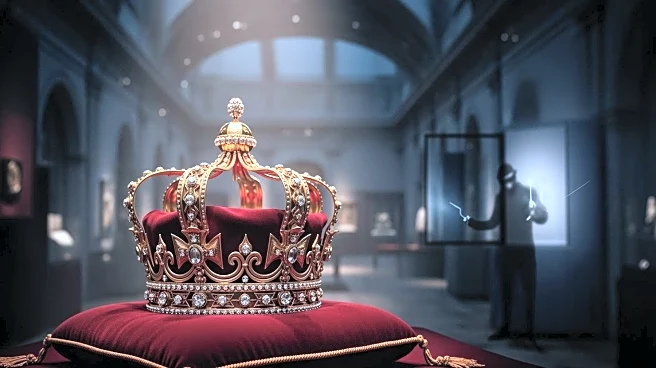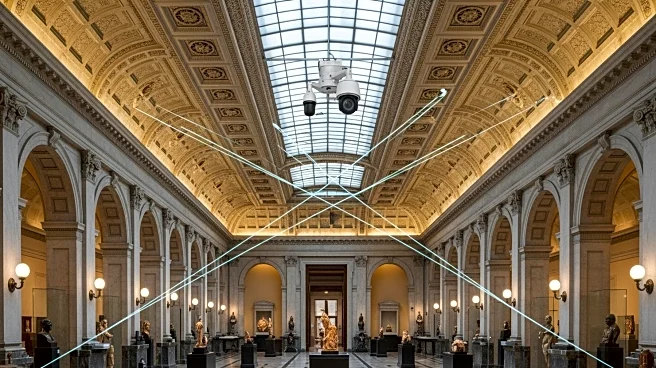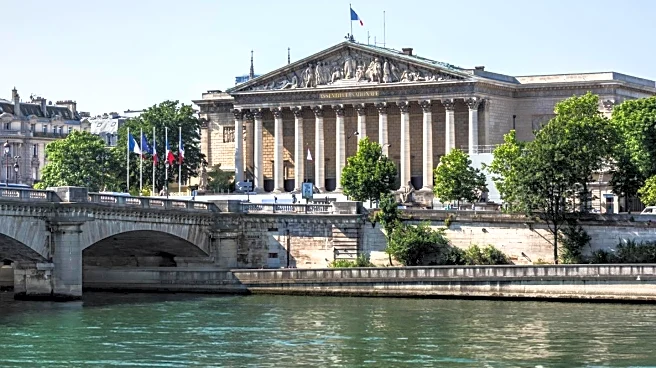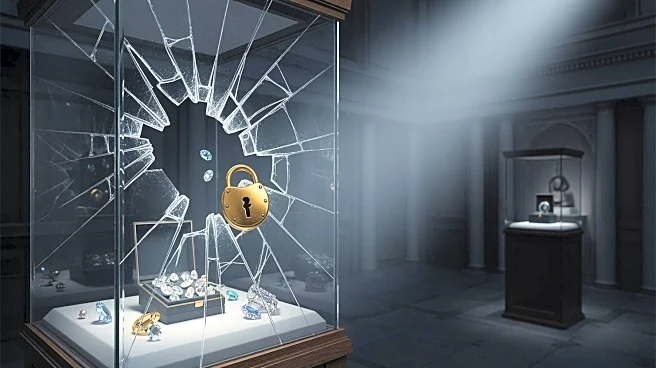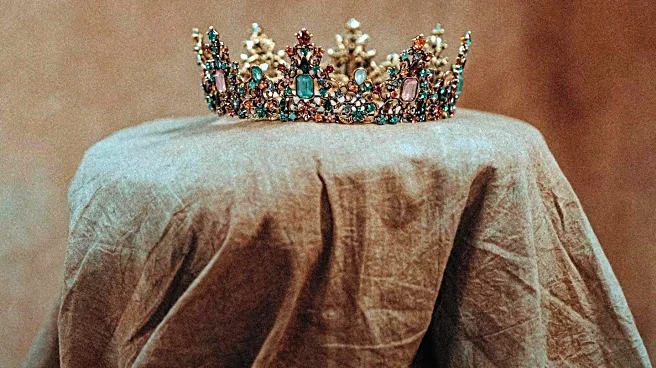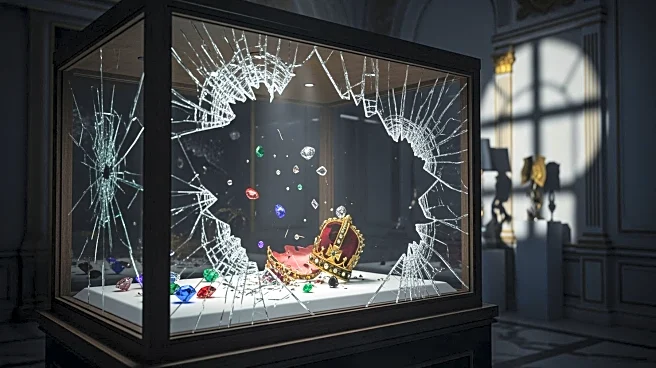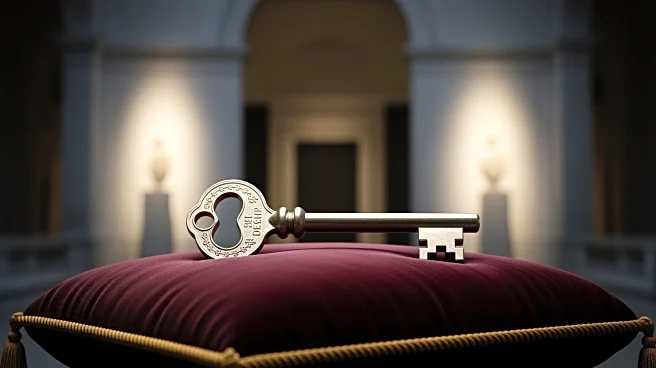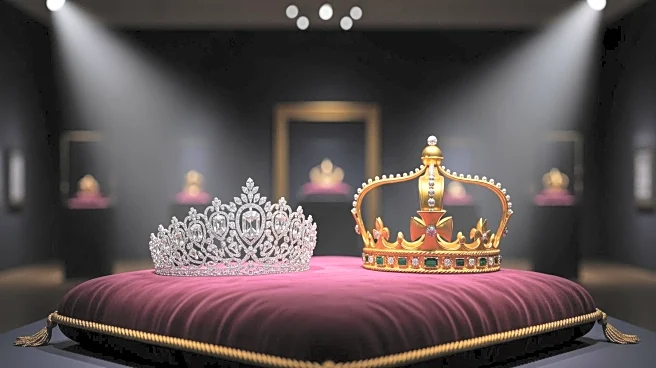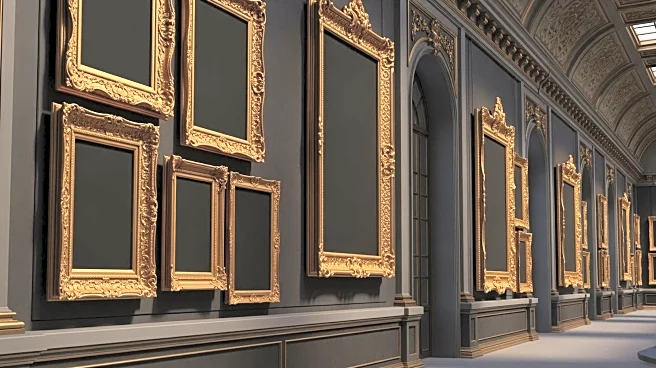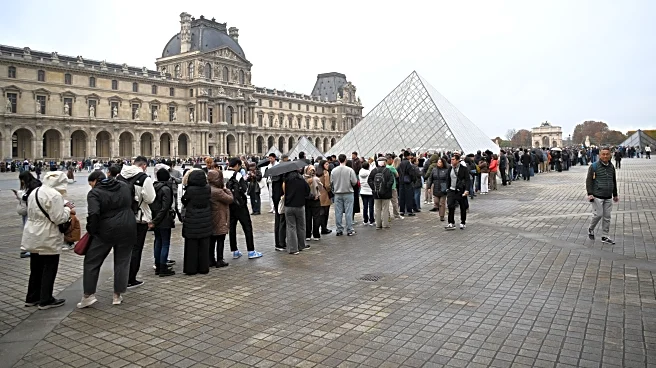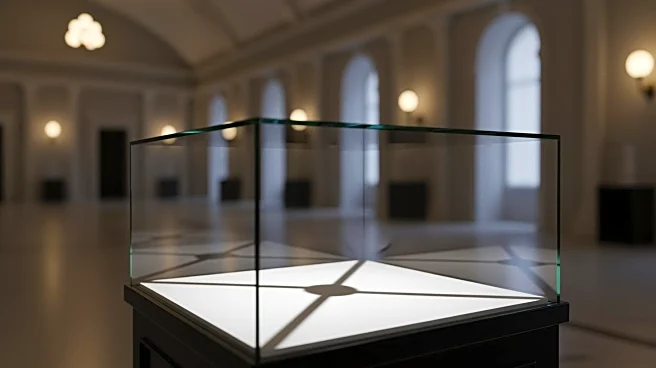What's Happening?
The Louvre Museum in Paris has been the site of a significant theft involving jewels of historical importance. The stolen items include an emerald necklace and earrings belonging to Empress Marie-Louise,
the second wife of Napoleon I, and a crown worn by Empress Eugenie, wife of Napoleon III. Other items taken include a brooch of Empress Eugenie, a crown worn by Queen Marie-Amelie, and sapphire jewelry associated with Queen Hortense. The theft has led to the museum's closure for a second day as investigators search for the culprits. The jewels represent a window into 19th-century French imperial history, highlighting their cultural and historical significance.
Why It's Important?
The theft of these jewels from the Louvre Museum is significant due to their historical and cultural value. These items are not only valuable in monetary terms but also represent important artifacts from France's imperial past. The incident raises concerns about security measures at one of the world's most famous museums and could lead to increased scrutiny and potential changes in how such institutions protect their collections. The loss impacts historians, cultural institutions, and the public who value access to historical artifacts. The theft could also affect tourism and the reputation of the Louvre as a secure repository of cultural heritage.
What's Next?
Investigators are actively searching for the perpetrators of the theft, and the Louvre Museum remains closed as the investigation continues. The French Culture Ministry is likely to review security protocols to prevent future incidents. The museum's closure may affect visitors and tourism in Paris, prompting discussions on enhancing security measures at cultural institutions. The recovery of the stolen items is a priority, and authorities may seek international assistance if the jewels are suspected to be moved across borders.
Beyond the Headlines
The theft highlights broader issues of cultural heritage protection and the challenges faced by museums globally in safeguarding valuable artifacts. It raises ethical questions about the illicit trade in stolen art and historical items, potentially prompting international cooperation to combat such crimes. The incident may lead to increased awareness and advocacy for better security and preservation practices in museums worldwide.
